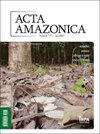用吡喃木生产硫酸盐浆
IF 0.8
4区 环境科学与生态学
Q4 ECOLOGY
引用次数: 0
摘要
摘要:巴西在短纤维纸浆生产方面处于国际领先地位。尽管巴西拥有丰富的生物多样性,但这种生产是以外来的桉树无性系为基础的。从这个意义上说,在评估包括亚马逊在内的巴西植物群的新纤维来源方面可能有很大的潜力。本研究旨在评估吡喃木(锦葵科)在生产硫酸盐浆方面的技术潜力。在马托格罗索州(巴西),从一片商业森林中收获了四年树龄的树木用于木材生产。我们测定了木材的化学成分(全纤维素、Klason木质素、可溶性木质素、提取物和灰分)、物理性质(密度和孔隙率)和纤维形态(纤维长度、宽度和厚度、管腔直径、壁分数、柔性系数、长细比和朗克尔比)。对木材进行有效碱用量为10%至24%、间隔为2%的制浆。吡喃木呈现出有利于纤维素纸浆生产的特性,如适当的纤维尺寸和低木质素、提取物和灰分。剩余活性碱的量和黑液的pH值与制浆过程中碱用量的增加呈正相关。碱用量的增加降低了纸浆的得率、卡伯值和废料含量,并增加了己烯酸的浓度。本文章由计算机程序翻译,如有差异,请以英文原文为准。
Production of kraft pulp from Ochroma pyramidale wood
ABSTRACT Brazil stands out in the international scenario in the production of short-fiber pulp. Despite the great Brazilian biodiversity, that production is based on exotic Eucalyptus clones. In this sense, there may be great potential in the assessment of new sources of fibers from the Brazilian flora, including the Amazon. The present study aimed to assess the technical potential of the wood of Ochroma pyramidale (Malvaceae) for the production of kraft pulp. Four-year-old trees were harvested from a commercial forest for lumber production in Mato Grosso state (Brazil). We determined the wood’s chemical compositions (holocellulose, Klason lignin, soluble lignin, extractives and ash contents), physical properties (density and porosity), and fiber morphology (fiber length, width and thickness, lumen diameter, wall fraction, coefficient of flexibility, and slenderness and Runkel ratios). The wood was subjected to pulping with an effective alkali charge ranging from 10 to 24%, with intervals of 2%. Ochroma pyramidale wood presented characteristics favorable to the production of cellulosic pulp, such as appropriate fiber dimensions and low lignin, extractives, and ash content. The amount of residual active alkali and pH of the black liquor were positively related to the increase of the alkali charge employed in the pulping process. The increase of alkali charge decreased the pulp yield, kappa number and waste content, and increased the hexenuronic acid concentration.
求助全文
通过发布文献求助,成功后即可免费获取论文全文。
去求助
来源期刊

Acta Amazonica
PLANT SCIENCESECOLOGYZOO-ECOLOGY
CiteScore
1.70
自引率
0.00%
发文量
34
审稿时长
22 weeks
期刊介绍:
Acta Amzonica is a multidisciplinary, peer-reviewed, open access, free-of-charge scientific journal for research in and about the Amazon region, published since 1971 by the Instituto Nacional de Pesquisas da Amazônia - INPA, in Brazil.
The journal publishes quarterly issues containing articles and short communications in English across a broad range of disciplines, including Agronomy and Forestry, Animal Sciences and Fisheries, Biodiversity and Conservation, Biotechnology, Chemistry and Pharmacology, Environmental Sciences, Food Sciences, Geosciences, Health Sciences, Human and Social Sciences, and Materials Technology.
 求助内容:
求助内容: 应助结果提醒方式:
应助结果提醒方式:


